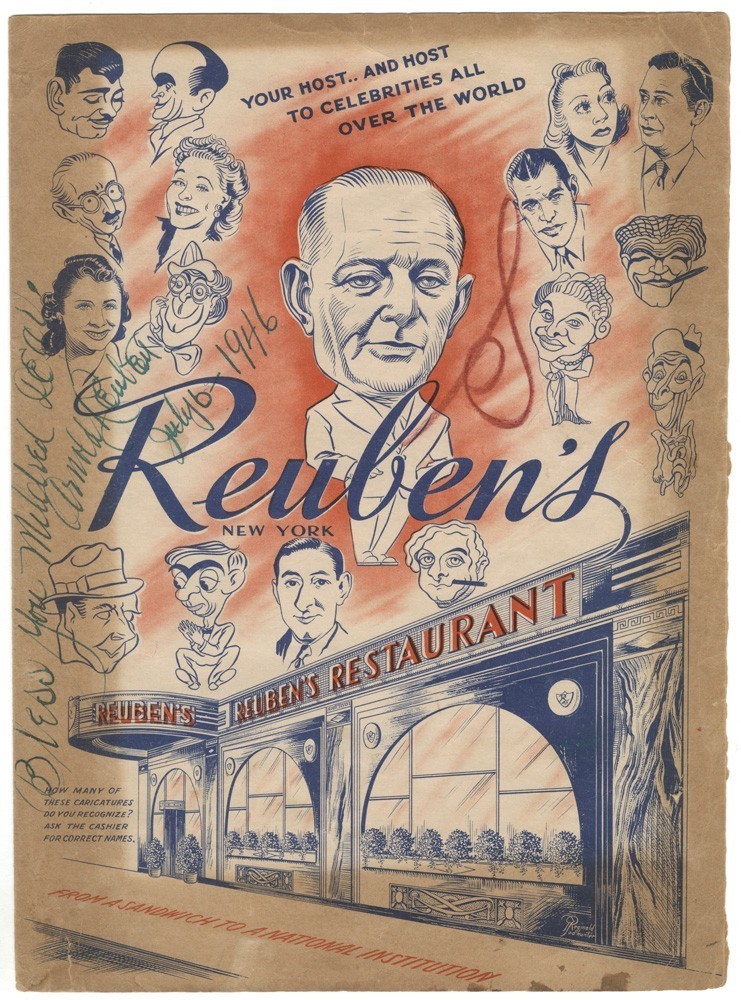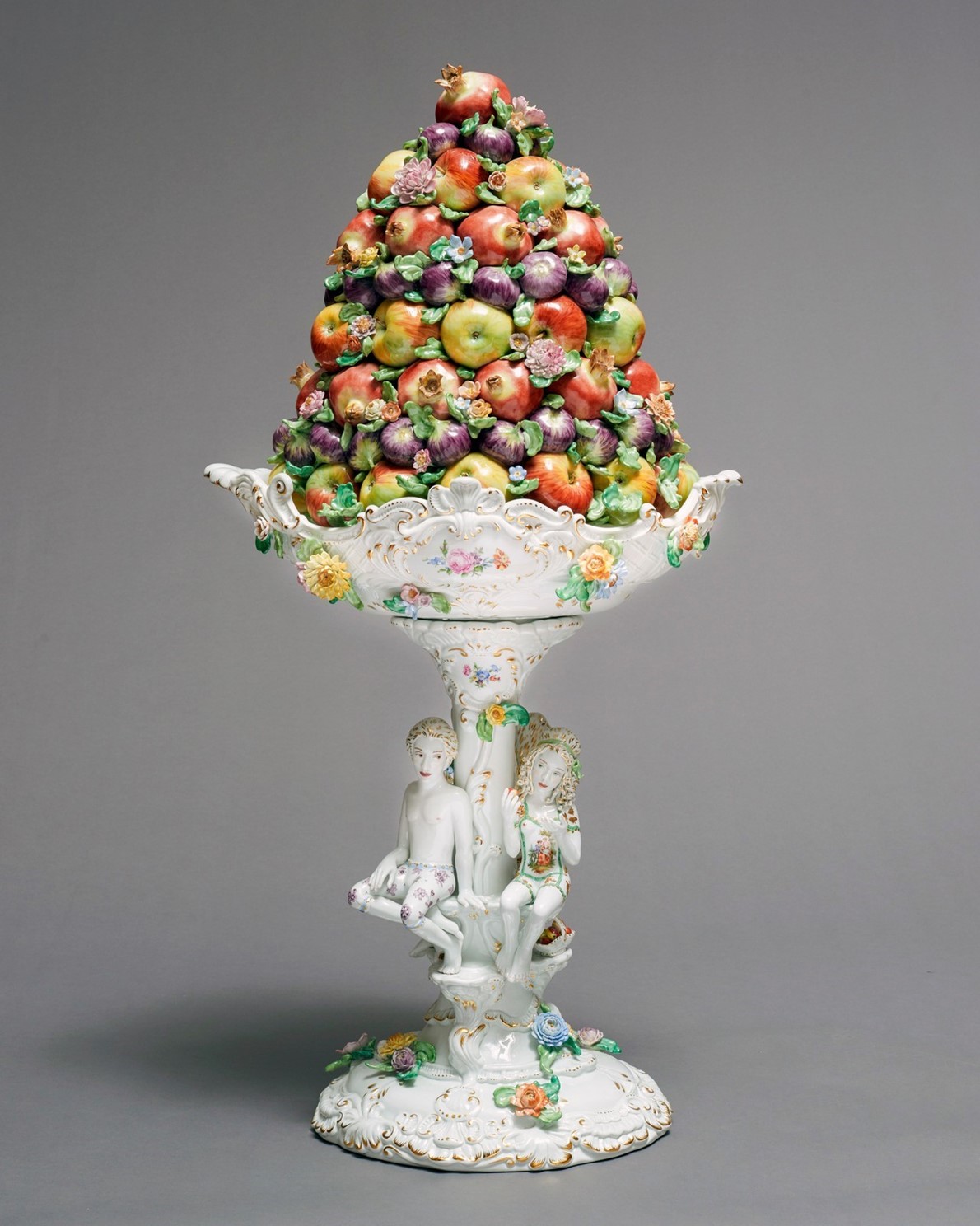Food, a subject of universal appeal, is a big
deal in many cities and especially in New York. There are delis, lots of them,
and the city has a long history with the oyster.
اضافة اعلان
“Food in New York:
Bigger Than the Plate” is among the many food-related exhibitions on display
around the country, while others — on food-related artwork from the collection
of Jordan D. Schnitzer and the rise of Jewish delicatessens across the United
States — are traveling to various institutions.
The New York show,
which opened last month at the Museum of the City of
New York and is on display
through September 30, 2023, was inspired by a 2019 exhibition with a similar
name at the Victoria and Albert Museum in London that “explored current
experiments at every stage of the food system, from compost to table”.
Not surprisingly,
the exhibition is New York-centric, adapted, the museum says, “to focus on
eating and food systems in the Big Apple … anchored around issues of
sustainability and resiliency, labor justice, and equitable access to food”.
It looks at oysters
gathered by the Lenape people before the arrival of the Dutch, to the ways food
is sold in New York, ranging from street sellers and bodegas to the city’s
23,000 restaurants. It also looks at the vulnerabilities of the food system.
In addition, it
features works by more than 20 contemporary artists and designers who use
“their crafts to imagine solutions to key global and local food-related
challenges”, the museum said. Among these is a “Biosphere” by Mary Mattingly,
which the museum calls “a structural ecosystem (that grows) native plants in
saltwater”; photos by Maximo Colon that depict “nourishers” in the nearby
Harlem and East Harlem neighborhoods; and a portable beehive by Jan Mun.
Monxo Lopez,
associate curator of the museum and co-curator of the exhibition with Fabio
Parasecoli, a professor of food studies in the nutrition and food studies
department of
New York University, describes the exhibition as “half art show,
half historical review”, adding that its focus “is really about our planet’s
desperation for a way through some of these formidable challenges, and we need
the ideas of artists and designers to look for out-of-the-box solutions.”
 A Reuben’s Delicatessen menu from 1946, part of the exhibition ‘I’ll Have What She’s Having: The Jewish Deli’, which will travel to the New-York Historical Society in November.
A Reuben’s Delicatessen menu from 1946, part of the exhibition ‘I’ll Have What She’s Having: The Jewish Deli’, which will travel to the New-York Historical Society in November.
“Food for Thought”,
an exhibition from the Baltimore Museum of Industry, features photos by J.M.
Giordano of food and nutrition service workers at the Baltimore City Public
Schools, who prepared and distributed more than 88,000 meals daily during the
2021-22 school year, and interviews with these workers by a local radio
producer, Aaron Henkin. It is on display in the lobby of the headquarters of
the Baltimore public schools through June 2023 as well as online; a larger
exhibition on the workers will open at the museum in January 2023.
A more fanciful
food exhibition is the digital “Kneaded: L.A. Bread Stories”, from the
Natural History Museum of Los Angeles County, which is being updated through November
and then available indefinitely.
This features bread
makers of more than 20 nationalities who operate out of mini-malls, pop-up
restaurants, food trucks, and corner bakeries. According to the museum, “bread
makers in LA lovingly create bread for their communities, but, more
importantly, many of them recognize that the bread goes beyond nutrition — it
builds community. Its universal presence around the world and consumption by
people of all varying backgrounds creates a universal language. In the most
trying of times, bread brings people together.”
The exhibition,
“The Art of Food”, is from the collection of Portland, Oregon-based Jordan D.
Schnitzer and has more than 100 food-related works by more than 30 artists,
including Andy Warhol, Lorna Simpson, Enrique Chagoya, and Hung Liu. It
originated last fall at the University of Arizona Museum of Art in Tucson.
“Food is complex,”
said Olivia Miller, interim director and curator of exhibitions at the Arizona
museum, who put together the exhibition, “not only as physical necessity, but
it is also integral to our communities, relationships, cultures and memories.
It’s a commodity, it’s a livelihood and it has ethical implications.
“Sometimes people
don’t fully think about the many different ways it can be considered”, she
added.
The exhibition is
on display at the Jordan Schnitzer Museum of Art at Portland State University
in Oregon and will travel to the Oklahoma Contemporary Arts Center in
Oklahoma City in February.
 Chris Antemann’s ‘Food Pyramid’ in ‘The Art of Food’ exhibition at the Jordan Schnitzer Museum of Art at Portland State University, through December 3.
Chris Antemann’s ‘Food Pyramid’ in ‘The Art of Food’ exhibition at the Jordan Schnitzer Museum of Art at Portland State University, through December 3.
“‘I’ll Have What
She’s Having’: The Jewish Deli”, originated earlier this year at the Skirball
Cultural Center in Los Angeles. It will travel to the New-York Historical
Society in November, where it will be expanded to include photos of local delis,
deli owners’ items, and costumes from “The Marvelous Mrs. Maisel”.
The exhibition will
travel to the Holocaust Museum in Houston in May 2023 and later go to the
Illinois Holocaust Museum and Education Center in Skokie, Illinois.
Looking ahead, in
February the Bard Graduate Center in New York will offer “Staging the Table in
Europe 1500-1800”, exploring the history of dining customs and culture in
Italy, Germany, France, England, and the Netherlands.
Food and museum
enthusiasts can even combine their passions at home.
Earlier this month, Rizzoli published “Cocktails
with a Curator”, a collection of essays based on the Frick Collection’s wildly
popular YouTube series born in the first year of the pandemic and viewed by
almost two million people worldwide.
In each of the 65
episodes, a Frick curator offers insights on a work of art in the museum’s
collection — a painting, sculpture, or decorative art — as well as a related
cocktail.
For example, in her
final episode of the series, curator Aimee Ng discusses Joshua Reynolds’
“Selina, Lady Skipwith” and offers the recipe for the Asparagus Fizz, which,
the Frick says, “was inspired by an 1828 entry in Selina’s journals in which
she notes that she has tasted asparagus for the first time”.
Ng; Xavier F. Salomon, deputy director and chief curator of
the Frick; and Giulio Dalvit, assistant curator of sculpture at the Frick, are
the authors of the book, which also features the cocktail recipes.
Read more Good Food
Jordan News



